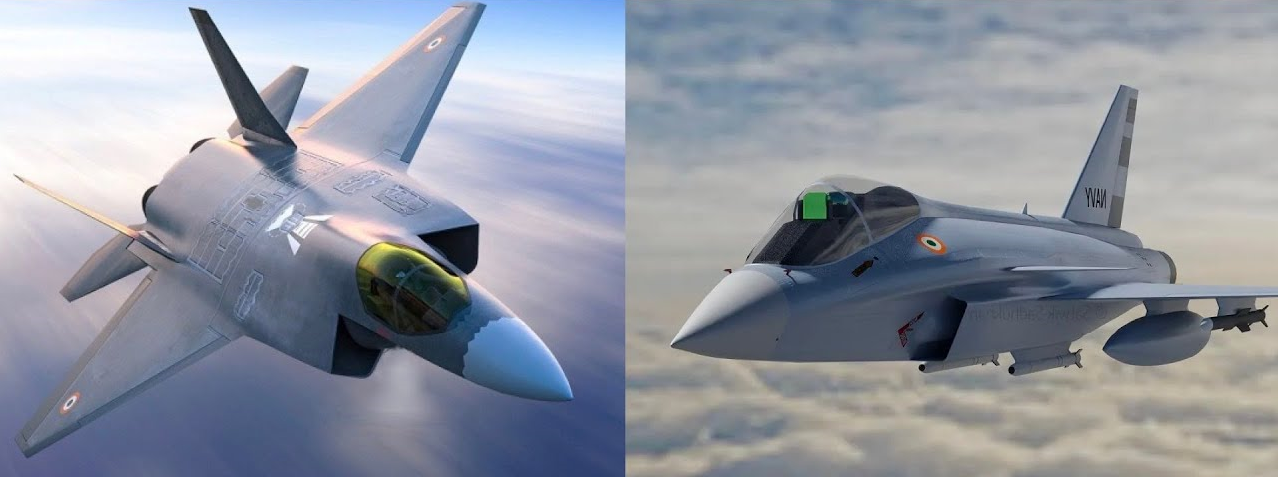SOURCE: AFI


India has announced two separate missile test windows around the strategically located Andaman & Nicobar Islands, setting the stage for what is believed to be significant military exercises aimed at showcasing and advancing its missile capabilities. The notifications detail testing periods from January 15-17 and January 19-20, 2025, with designated areas where no-fly zones will be enforced to ensure safety and security during these operations.
First Test Window (January 15-17, 2025): Slightly shorter, this test area extends up to 380 kilometers, still a considerable distance for missile operations.
Continue readingSOURCE: AFI


According to recent reports from local Bangladeshi media, the Bangladesh government is engaged in discussions with Turkey to acquire 26 light tanks. These tanks, known as the TULPAR, are multi-purpose, and come from a collaborative effort between Turkish and Italian defense companies. This proposed deal signifies Bangladesh’s ongoing efforts to modernize and enhance its military capabilities.
The TULPAR light tank has been designed with versatility and adaptability in mind, making it an ideal choice for the varied terrains and conditions that characterize Bangladesh’s geography. Known for their ease of operation in soft, marshy, and rugged terrains, the TULPAR tanks are especially well-suited for the challenging landscapes found in Bangladesh’s vast wetlands and low-lying flood-prone areas.
Continue readingSOURCE: RAUNAK KUNDE / NEWS BEAT / IDRW.ORG


In a strategic move to optimize defence resources and promote Indigenous manufacturing, the Ministry of Defence (MoD) is poised to integrate the Indian Air Force (IAF) into the Indian Navy’s Twin Engine Deck Based Fighter (TEDBF) program. This decision aims to address the substantial funding and production requirements of the TEDBF project, which are comparable to those of the IAF’s Advanced Medium Combat Aircraft (AMCA) program.
The TEDBF program, designed to replace the ageing MiG-29K fleet onboard the Indian Navy’s aircraft carriers, requires significant investment. The Navy has outlined a need for approximately 145 units. However, the MoD has initially approved the procurement of 80 units. To ensure the financial viability of this project and to attract private sector involvement, it’s estimated that around 200 jets need to be produced.
Continue readingSOURCE: RAUNAK KUNDE / NEWS BEAT / IDRW.ORG


BrahMos Aerospace is in discussions with the Indian Army to develop a ground-based variant of the upcoming BrahMos-NG cruise missile. This variant would feature a booster stage and could be mounted on 8×8 Heavy Mobility Vehicles (HMVs). The lighter and more agile configuration aims to address specific operational needs, particularly in high-altitude terrains.
The IAF has already expressed strong interest in the BrahMos-NG program, particularly for its air-launched configuration. The lighter weight and smaller dimensions of the NG missile make it compatible with a wider range of aircraft, including smaller platforms like the LCA Tejas Mk1A.
Continue readingSOURCE: RAUNAK KUNDE / NEWS BEAT / IDRW.ORG

In a landmark stride towards bolstering maritime security in the Indian Ocean Region, India and the United States have unveiled plans for co-production of U.S.-designed sonobuoys, aimed at enhancing Undersea Domain Awareness (UDA) for the Indian Navy. This collaboration marks a significant advancement in the realm of high-end technology, specifically tailored for tracking submarines in the vast and deep waters of the world’s oceans.
The announcement was made as part of a comprehensive fact sheet titled ‘The U.S. and India Committed to Strengthening Strategic Technology Partnership,’ released on January 6, 2025, following the visit of U.S. National Security Advisor Jake Sullivan to India. This visit was centered around deepening defense innovation and industrial cooperation between the two nations.
Continue readingSOURCE: AFI


In a significant announcement for aviation enthusiasts and defense analysts alike, the United Aircraft Corporation (UAC) has confirmed that the Sukhoi Su-57 “Felon,” Russia’s advanced fifth-generation stealth fighter, will participate in a full-fledged flying display at Aero India 2025. This event, scheduled to take place at the Air Force Station in Yelahanka, Bengaluru from February 10th to 14th, promises to be a showcase of cutting-edge aerial technology.
The decision by UAC to bring the Su-57 for a flying display at Aero India is seen as a strategic move to strengthen ties with India, a long-standing defense partner of Russia. It comes at a time when India is actively seeking to modernize its air force with advanced fighter jets, amidst a backdrop of increasing regional security concerns.
Continue readingSOURCE: AFI


In a candid assessment of India’s indigenous Light Combat Aircraft (LCA) program, Air Chief Marshal Amar Preet Singh, the current Chief of the Air Staff, has highlighted significant delays in the production of the Tejas Mk1 jet. Speaking at a recent press conference, the Air Chief revealed that since its initial induction into the Indian Air Force (IAF) in 2016, fewer than 40 Tejas Mk1 aircraft have been inducted, pinpointing the slow pace of production as a critical bottleneck.
Air Chief Marshal Singh expressed his deep concern over the production rates, emphasizing the urgent need to address these delays to maintain the IAF’s combat readiness. He stated, “The Tejas aircraft has been with us since 2016, but the numbers we’ve seen inducted are not commensurate with our requirements. We need to do something about it.”
Continue readingSOURCE: AFI


In a significant stride towards bolstering India-US civil nuclear cooperation, the United States has announced plans to remove several Indian companies from its restricted ‘entities list.’ This move aims to dismantle decades-old barriers that have curtailed nuclear trade between the two nations.
US National Security Adviser Jake Sullivan, during his address at the Indian Institute of Technology, Delhi on Monday, confirmed that the US is in the process of finalizing steps to eliminate these long-standing regulations. “Today, I can announce that the United States is now finalizing the necessary steps to remove long-standing regulations that have prevented civil nuclear cooperation between India’s leading nuclear entities and US companies,” Sullivan stated.
Continue readingSOURCE: AFI


India’s nuclear history is one of profound transformation—from a staunch advocate for a nuclear-free world to becoming the sixth declared nuclear power in 1974. This journey, shaped by global politics, regional conflicts, and internal dynamics, offers a fascinating insight into how ideals, ambitions, and strategic imperatives intersect.
India’s initial stance on nuclear weapons was rooted in moral conviction and the horrors of the atomic bombings in Japan. Mahatma Gandhi, in 1947, decried nuclear weapons as a “sinful and evil use of science.” Shortly after, India’s first Prime Minister, Jawaharlal Nehru, voiced his concerns about nuclear weapons being used disproportionately against Asians, calling for their global abolition.
Continue readingSOURCE: IDRW.ORG


The French Navy’s nuclear-powered attack submarine, Suffren, has made its presence felt in India, accompanying the Charles de Gaulle carrier battle group on a strategic visit. This event is not just a demonstration of military cooperation between the two countries, but also an opportunity for India to explore advanced submarine technologies. France has extended an offer to India, sharing the cutting-edge Pump-jet propulsion technology used in the Suffren-class nuclear-powered attack submarines, a crucial component that could have significant implications for India’s ongoing nuclear submarine projects.
The Pump-jet propulsion system is a sophisticated alternative to traditional propeller-based propulsion systems. This technology uses a pump to draw water into the submarine and eject it through a nozzle, creating thrust. The design significantly reduces noise levels, making it more stealthy and harder to detect. As stealth is one of the most critical factors in modern naval warfare, particularly for submarines, the Pump-jet system offers a clear advantage in maintaining operational secrecy and survivability in hostile waters.
Continue readingSOURCE: IDRW.ORG


The Defence Electronics Applications Laboratory (DEAL) in Dehradun has made significant strides in airborne communication technology with the successful trials of the C-Band Line-of-Sight (LOS) Datalink under the Datalink Airborne Platforms (DLAP, DEA-118) project. These trials were conducted on the HS125-800 Hawker aircraft at the Centre for Airborne Systems (CABS) in Bengaluru, in collaboration with industry partners.
The trials started with ground-based tests between the Ground Earth Station (GES) and a moving vehicle, ensuring the reliability of the datalink system under dynamic conditions. The Line Replaceable Unit (LRU) for the airborne datalink was successfully installed on the HS125-800 Hawker aircraft, marking a significant step in integrating advanced communication systems into existing platforms.
Continue readingSOURCE: AFI


In a move that could significantly advance India’s defense capabilities, the country is on the cusp of making a pivotal decision regarding the engine for its Advanced Medium Combat Aircraft (AMCA) program. The engine, which needs to deliver a thrust of approximately 110kN, is central to the success of this ambitious 5th generation fighter jet project. Negotiations are currently underway with two of the world’s leading aerospace companies: France’s Safran and the UK’s Rolls-Royce.
The AMCA, designed to be India’s first indigenous stealth fighter, represents a leap forward in the nation’s aerospace technology. The choice of engine is not merely a technical decision but a strategic one, affecting everything from the jet’s performance to India’s defense self-reliance and international partnerships.
Continue readingSOURCE: AFI


In a significant stride for India’s burgeoning defence manufacturing sector, Bengaluru-based SSS Defence has begun exporting its domestically developed .338 Lapua Magnum Saber Sniper Rifles to an unnamed friendly nation. This development underscores India’s growing capability in producing high-quality, specialized military equipment tailored for modern combat scenarios.
The 338 Saber Sniper Rifle, designed for elite military sniping and special law enforcement operations, has been crafted to meet the stringent demands of long-range engagements. Here are some key features of this rifle:
Continue readingSOURCE: AFI


In a development that has stirred controversy and raised eyebrows in regional geopolitics, Pakistani ISI-backed handles on the social media platform X have claimed that India’s Research and Analysis Wing (R&AW) has been supplying the Afghan Taliban with Anti-Tank Guided Missiles (ATGMs). Specifically, these allegations point to the transfer of 9M113 Konkurs missiles, originally of Russian design but also manufactured in India.
These claims come on the heels of reports from Indian sources in October 2024, which acknowledged the transfer of such weaponry. The move has been labeled by various analysts as a potentially destabilizing act in the already volatile South Asian region. The Konkurs missile, known for its effectiveness against armored vehicles, could significantly alter the balance of power if indeed used in active combat scenarios.
Continue readingSOURCE: AFI


India is currently in the process of evaluating options for the procurement of 110 multi-role fighter aircraft (MRFA) as part of its efforts to modernize and strengthen the Indian Air Force (IAF). The MRFA tender, estimated to cost around $25 billion, aims to replace aging fleet elements, bolster combat capabilities, and ensure air superiority for the next several decades. While the acquisition of advanced fighter jets remains an important component of India’s military modernization, a $25 billion investment could be allocated more strategically in several other ways to not only enhance India’s aerospace sector but also to bolster overall national defense and security.
Let’s explore how India can maximize this substantial budget in various sectors that will have both immediate and long-term impacts on the nation’s aerospace sector and the IAF’s combat strength.
Continue reading